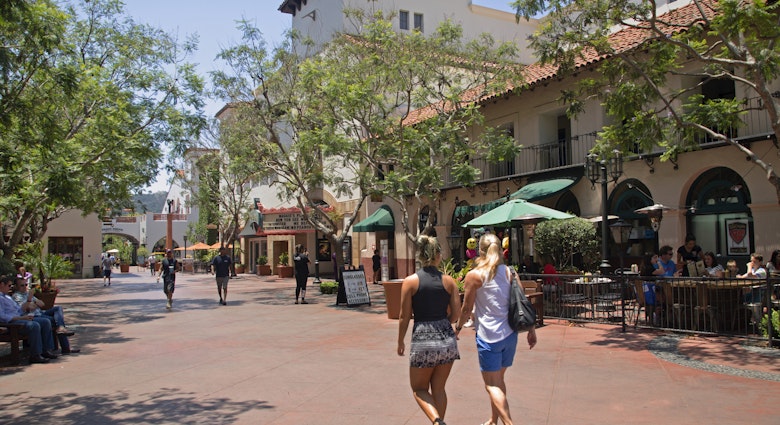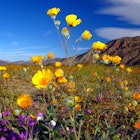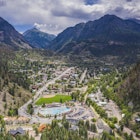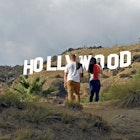With the launch of Lonely Planet's Ultimate United States Travel List, we wanted to explore some of our favorite American destinations and zoom in a little closer.
Each piece begins with a bird's-eye view of a uniquely American site's history and impact and then zooms in to reveal the lived experience on the ground.
In this article, LA-based Kevin EG Perry dives into the cultural and historical icon known as Griffith Observatory.
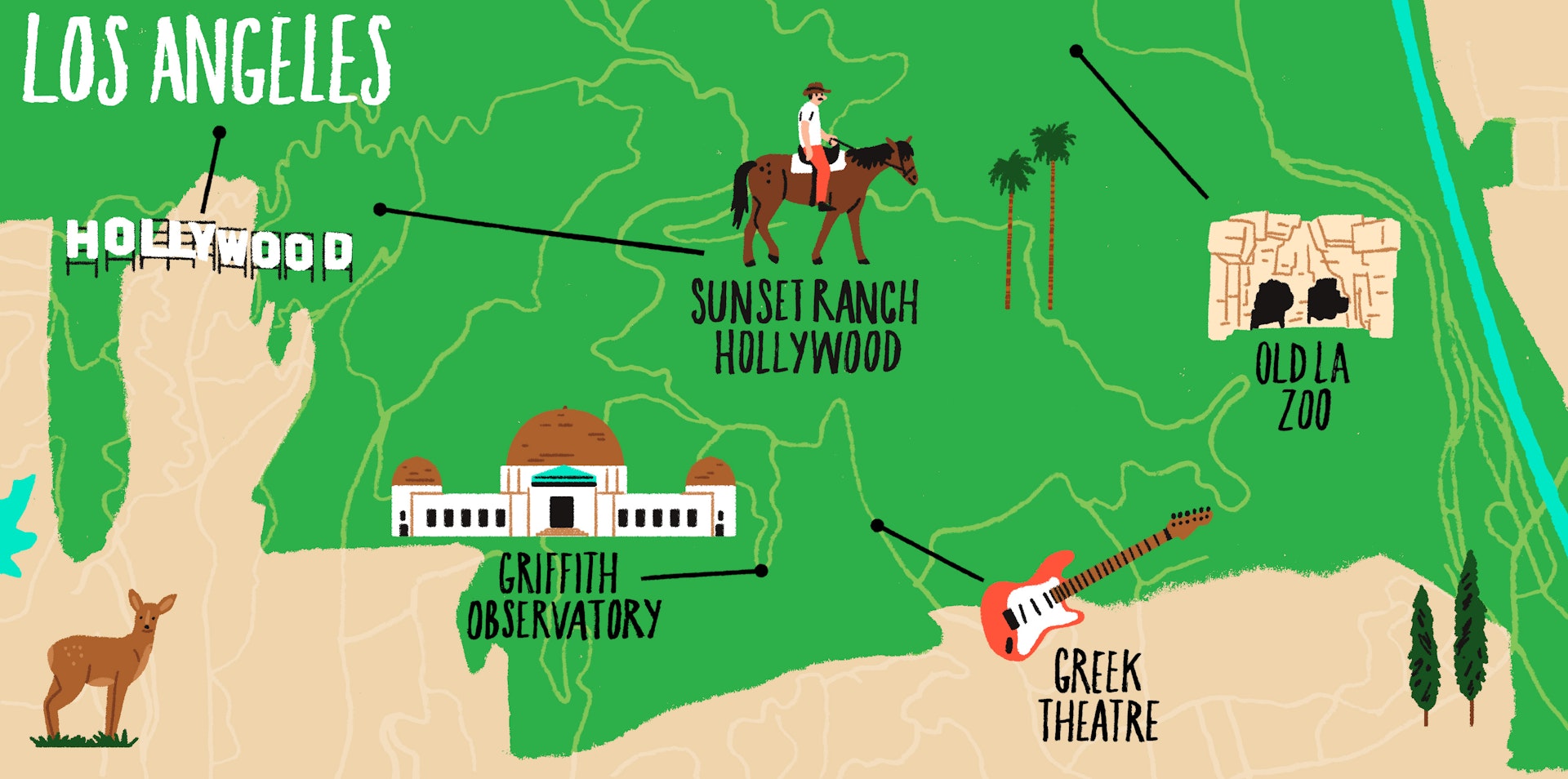
35,000 feet: A gift to the city
In 1781 José Vicente Feliz was one of four soldiers who guarded settlers as they founded El Pueblo de Nuestra Señora la Reina de los Ángeles, the town that would one day become Los Angeles. Feliz went on to become the settlement’s first commisionado, or mayor. As a reward for his service, the Spanish King Carlos III awarded him one of the first land grants in California’s history. The 6647-acre area in the hills to the east of the settlement took the name Rancho Los Feliz.
In 1882 Griffith J. Griffith, who was born in Glamorganshire in Wales before making his fortune in California mining, purchased a large swath of Rancho Los Feliz. Fourteen years later, Griffith donated 3015 acres of the land to the city of Los Angeles, calling it “a Christmas present.” He told the Los Angeles City Council at the time of his dream for Griffith Park. “It must be made a place of rest and relaxation for the masses, a resort for the rank and file, for the plain people,” he said. “I consider it my obligation to make Los Angeles a happy, cleaner, and finer city.”
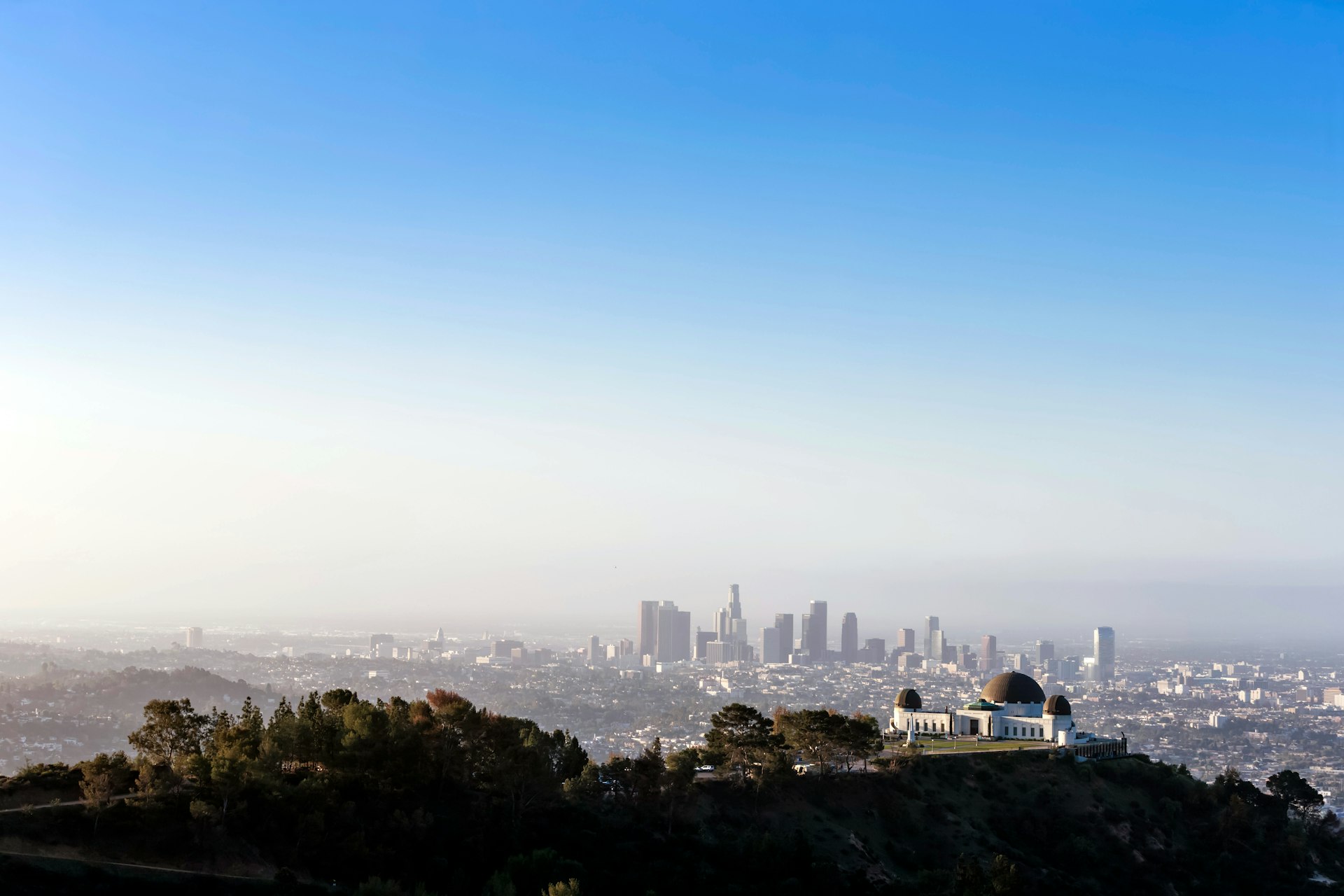
Toward the end of his life, Griffith visited the Mount Wilson Observatory in the San Gabriel Mountains. The experience of gazing out at the universe profoundly affected him. “Man’s sense of values ought to be revised,” he commented. “If all mankind could look through that telescope, it would revolutionize the world.” When he died in 1919, Griffith left money in his will to be used to build an observatory that would make astronomy accessible to the general public. Construction began on June 20, 1933, and the Griffith Observatory opened its doors on May 14, 1935. Admission has always been free, in accordance with Griffith’s wishes.
The observatory’s prime location on the south-facing slope of Mount Hollywood makes it visible from much of Los Angeles. The surrounding Griffith Park, now expanded to 4310 acres, remains one of the largest urban parks in the United States. The arid climate means there is always a risk of brush fires, and the hills still contain pockets of wilderness. Mountain lions, cougars and coyotes all call Griffith Park home.
5000 feet: A cultural icon is born
In the decades since 1935, Griffith Observatory has realized Griffith J. Griffith’s dying wish by exposing vast numbers of the general public to astronomy. The site has welcomed over 80 million people, making it the most-visited stargazing location in the world. Along with curious stargazers, the observatory also attracts visitors keen to take in the unparalleled panoramic views that stretch from the Pacific Ocean to downtown Los Angeles.
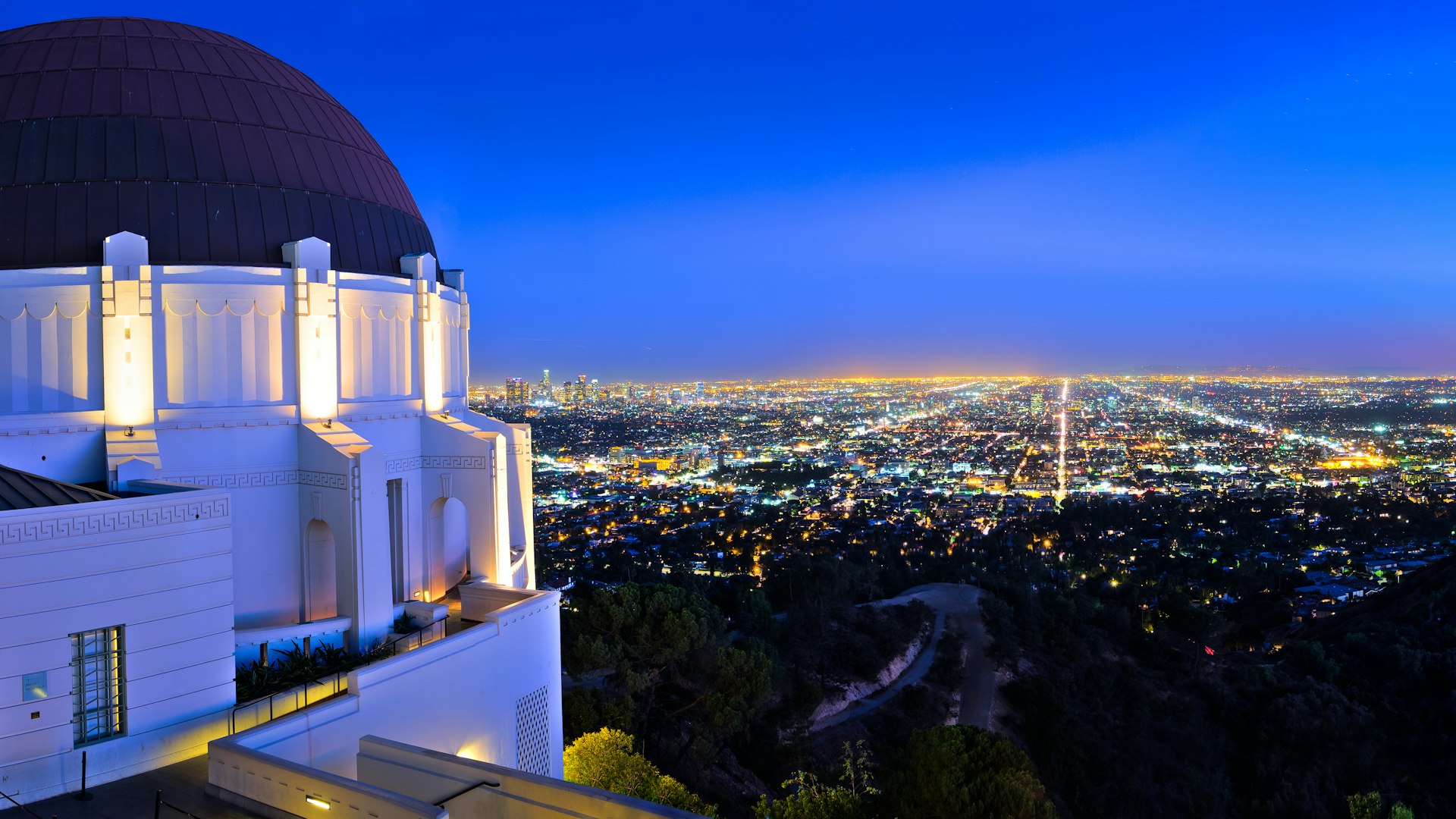
Being located so close to Hollywood, Griffith Observatory could hardly avoid being immortalized on screen. It made its movie debut the same year that it opened in the science-fiction western The Phantom Empire. In the film, which stars the singing cowboy Gene Autry, the observatory is supposedly subterranean, part of the highly scientific and advanced kingdom of Murania that Autry’s character discovers 20,000ft below his Radio Ranch.
Griffith Observatory’s most memorable appearance on film came two decades later in 1955’s Rebel Without a Cause. On this occasion, the observatory played itself. James Dean’s character, Jim Stark, gazes up at the stars while attending a lecture in the planetarium and remarks: “Once you been up there, you know you’ve been someplace.” Dean died in a car crash the same year the film was released and is memorialized with a bronze bust to the west of the observatory’s main lawn. Its plaque reads in part: “Although many movies have been filmed at Griffith Observatory, Rebel Without a Cause was the first to portray the observatory as what it is and to contribute positively to the observatory’s international reputation. This monument acknowledges Griffith Observatory’s long and continuous involvement with Hollywood film production by remembering the young star of that motion picture.”
From 2002 to 2006, Griffith Observatory was closed for a $93 million renovation and a major expansion. In order to preserve the clean Art Deco lines of its exterior, the expanded exhibition space was constructed entirely underground. Today, preservation of the site and building is managed by the Griffith Observatory Foundation, which continues to champion Griffith J. Griffith’s vision by encouraging all of us to spend more time looking up and out at the mysteries of the universe.

On the ground: Griffith Observatory today
The first thing that today’s visitors to Griffith Observatory see when they step through its massive glass and bronze-paneled doors is the same thing visitors would have seen when it first opened. The gently swaying Foucault Pendulum is a 240-pound bronze ball suspended from the roof of the observatory’s central rotunda by a 40ft cable. This simple device provides an elegant scientific demonstration of Earth’s rotation: the pendulum swings in a constant direction while Earth turns beneath it. As the day passes, the bronze ball knocks over pegs set up in the pendulum pit to indicate the progress of rotation.
As visitors descend into the observatory on a long sloping path, the Cosmic Connection exhibit elucidates the 14 billion-year history of our universe. The subterranean Gunther Depths of Space exhibit contains one of the observatory’s most awe-inspiring displays. The Big Picture is the largest astronomically accurate image ever created, measuring 152ft long by 20ft high. Centered on the Virgo Cluster of galaxies, it represents just a sliver of the night sky: equivalent to the amount that would be covered if you held up an index finger a foot from your face. To the naked eye this patch would contain just a few stars, but at this increased resolution and scale The Big Picture makes it possible to see over a million galaxies, ranging in distance from millions to billions of light-years away.
The observatory’s exhibitions, along with the state-of-the-art planetarium, combine to offer visitors a new perspective on their place in the universe. Meanwhile outside, terraces and promenades provide the best views of Los Angeles. For those visitors needing to reconnect with their home planet after time spent contemplating the cosmos, a network of hiking trails follow the slope of Mount Hollywood and wind down through Griffith Park, past coastal scrub and oak and walnut woodlands. The scent of sage lingers in the air, bringing walkers gracefully back down to Earth.
You might also like:
How to get around California
California’s 10 best beaches
We visited 48 US states in a camper van - these are the 10 best


